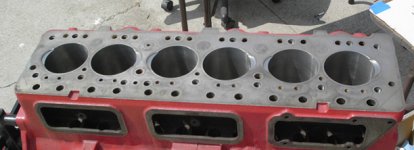Hey everyone - I just joined the sight but have been paging through posts for the past couple weeks. There's a wealth a very appreciated info here that I have just scratched the surface of.
I almost hate to post this (cause I am sure it is buried in these 186 pages) - but I need some help on a camshaft. I've got a 62 tri-carb and I want to regrind to MKIII spec. I know the lift and duration for a MKIII, but these are the only two spec numbers I was able to come up with. I want to make sure I have all the info needed before sending this off for re-grind. Also - I am seeing a huge price range in terms of re-grinds. Anyone that has had good luck with a machine shop - please let me know.
Unfortunately - it's back to work... only 161 pages of info left to go. Thanks for the help.
I almost hate to post this (cause I am sure it is buried in these 186 pages) - but I need some help on a camshaft. I've got a 62 tri-carb and I want to regrind to MKIII spec. I know the lift and duration for a MKIII, but these are the only two spec numbers I was able to come up with. I want to make sure I have all the info needed before sending this off for re-grind. Also - I am seeing a huge price range in terms of re-grinds. Anyone that has had good luck with a machine shop - please let me know.
Unfortunately - it's back to work... only 161 pages of info left to go. Thanks for the help.

 Hi Guest!
Hi Guest!

 smilie in place of the real @
smilie in place of the real @
 Pretty Please - add it to our Events forum(s) and add to the calendar! >>
Pretty Please - add it to our Events forum(s) and add to the calendar! >> 

